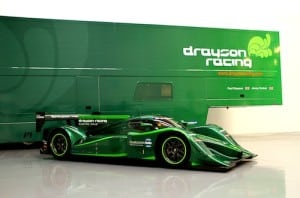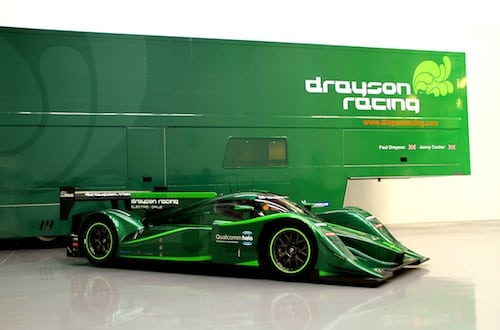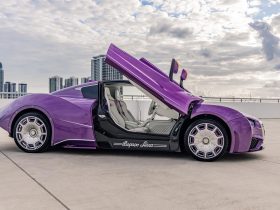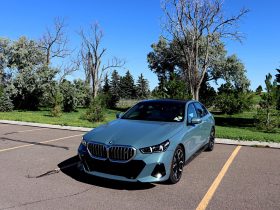
Drayson Racing Technologies just announced that it will attempt the FIA World Electric Land Speed Record on June 25 at RAF Elvington in Yorkshire, England. The original Lola B19 69/EV is being modified to meet the challenge.
Drayson Racing Technologies Goes For The World Electric Speed Record. If you’re not familiar yet with Drayson Racing technologies, you will soon be. I interviewed Lord Paul Drayson last year at EVS26 when he brought his unique electric conversion of a Lola B19. Since then, Drayson Racing Technologies is the technical adviser to the newly formed Formula E championship.
The current record stands at 175mph set by Battery Box General Electric in the US in 1974. Drayson Racing Technologies hopes to beat the record with a sub-1000kg, (less than 2,200 lb.) chassis. Entrepreneur, racing driver and former UK science minister Lord Drayson will drive a low-drag version of his famous green Drayson B12 69/EV. The electric Le-Mans Prototype will race on the Elvington’s 1.86-mile runway to attempt a world speed record.
Lord Drayson, CEO and cofounder of Drayson Racing Technologies, commented: “It is not the outright speed that is impressive about this record attempt, but the engineering challenge of accelerating a 1000 kg electric vehicle to such a high speed and sustaining that speed over a measured mile, before stopping safely all within a relatively short distance then turning round and doing it again within an hour. It’s a tremendous technical challenge but we believe it’s about time someone moved this record on to demonstrate just how far EV technology has come.” And therein lies the gist: to make electric car racing appealing, the question of distance racing needs to be addressed.
In my interview with Paul Drayson, he confided that he was ready to race last year and was working on lowering weight while increasing range. His B19 69/EV can race flat out for four laps and keep up with other prototypes, but the battery pack would be depleted. The trick is to manage your battery pack and squeeze more laps. One of the solution was a partnership with Qualcomm Halo, a company with an intelligent wireless charging solution. Qualcomm Halo’s system differs from other wireless chargers by using a three coil floor mounted system and one on the vehicle. This reduces mis-alignments, so crucial to effective charging.
Drayson Racing Technologies. Drayson Racing Technologies is a research and development business of Lord Drayson’s enterprises. A pioneer in the development of sustainable technologies in the challenging environment of motorsport, with the electric land speed record under its belt, it would showcase the possibilities the electric drivetrain has to offer. The Drayson B12 69/EV originally conceived as a prototype racer needed serious engineering to turn it into a land speed car. Having raced the Lola chassis in sports car championships around the world powered by a second generation bio-fueled Judd V10 engine, Drayson Racing Technologies explored the potential of the electric drivetrain and use the familiar Lola chassis as a starting point.
In its current iteration, the Drayson B12 69/EV represents the pinnacle of what a bona fide electric racing car can achieve in terms of performance. To meet the record challenge modifications were made to the setup of the car and drivetrain consistent with racing at a low downforce circuit. The version I saw last year used an ingenious kinetic energy recuperation form the shock absorbers to generate electricity for ailerons and flats. The new B12 69/EV achieves maximum traction acceleration in the short distance available, while sustaining maximum speed over a measured mile and stop safely.
Lord Drayson adds: “The reason we are doing this is to showcase the maximum level of EV performance at the moment and in a real racing car rather than a teardrop-shaped land speed record car. We are also demonstrating the future potential of technologies like wireless charging in speeding the adoption of high performance EVs. It’s a great way to build up to the Formula E championship that we are competing in from 2014 and will demonstrate that Britain is at the forefront of this vital technology, which I believe represents the future of the automobile.”
[slideshow id=103]
Drayson B12 69/EV Specification
- Chassis: Carbon Lola LMP1 chassis
- Power: 640 kW, 850 hp
- Mechanical: 4 Axial Flux Motors (2 per rear wheel) with integrated transmission • Single speed and independent drive and stress bearing battery and gearbox housings
- Battery: 30 kWh encased in a carbon battery cell integrated into the chassis to become a structural component. The battery is designed to be modular offering a range of power, capacity and weight configurations.
- Control: Cosworth ECU platform with DRT control algorithms
- Active Dynamics: Brake energy regeneration, Torque Vectoring and Traction Control
- Active Aerodynamics: Active dive planes, rear wing and gurney flap
- Brakes: Front-380mm carbon disks, 6-pot calipers and carbon pads. Rear are 355mm, 6-pot calipers and carbon pads
- Weight: 1095kg without a driver
World Land Speed Record Setup.
- Chassis: Low-drag bodywork configuration.
- Power: 480 kW, 600 hp
- Battery: 20 kWh lightweight, high-power configuration
- Weight: Sub 1000 kg without a driver







